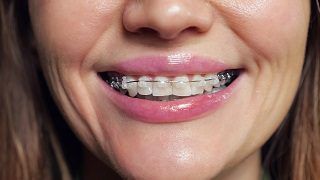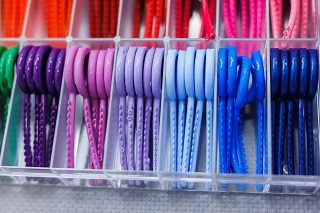How Do Orthodontic Treatments Work?
Orthodontic treatments are used to straighten the crooked teeth or align the misaligned teeth. The orthodontist used braces to correct the alignment of teeth. Braces are made of metal or ceramics and materials that attach them to the teeth. The success rate depends on taking care of your teeth and following the orthodontist's instructions.
Types Of Braces
Classic Braces
Classic braces are the kind of braces that are made of metal brackets that are glued to each tooth individually. Pressure is put on the teeth with the help of an archwire, and then elastic O rings connect the archwire to the brackets. As the teeth move slowly into the perfect place, the archwire is adjusted. The elastic bands are swapped at the orthodontist appointment
Other Kinds Of Braces

- Ceramic Braces
These braces are made of ceramics and are less visible as they are clear.
- Aligner Trays
Aligner trays are also known as Invisible braces. They can be easily taken on and off throughout the day.
After treatment is completed, retainers are given with the conventional brace. They help in keeping the teeth in place.
How Do Braces Work?
Braces push teeth with the help of increased pressure for a more extended period. With time, the jaw adheres to the pressure and transforms its shape. Under our gums, there is a membrane surrounded by the bone that deepens your teeth to your jaw. This membrane controls the position of the teeth, and it also responds to the pressure from the braces.
Getting the braces won't hurt, but during the first week, you will feel soreness. This soreness may continue when you visit the orthodontist when he adjusts the braces.

- Bands
Elastic bands called Ligatures or O bands are placed around the brackets after being put in your teeth. They aid in adding pressure on the jaws and are used in most orthodontists.
- Spacers
Spacers are made up of rubber bands or metal rings. The orthodontist will place them between your molars during the treatment.
Spacers push the jaws forward by making space at the back of the mouth. They will also create some space if the back of the mouth is too small for the braces.
Not every individual needs spacers. They are typically used for the first two weeks.
- Archwires
Through the archwire, pressure is put on the teeth to move. They connect the brackets on your teeth.
- Buccal Tube
Buccal tubes are made up of metal that is attached with molars. The buccal tube fixes the parts of the braces at the back of the mouth. The orthodontist can then release and tighten them.
- Coil Springs
Coil springs are occasionally positioned on the archwire of your braces. They put on pressure between your teeth, pushing them apart and increasing space.
All of these devices work together in orthodontic treatments.
Contact your Danville dentist, Dr. Hoss Abar, DDS, MSD at Danville Orthodontics now to learn more about orthodontic treatments.
*Neither this nor any other content in this media is meant to prescribe, recommend, or prevent any treatment or procedure. We highly recommend that you get the advice of a qualified dentist or other medical practitioners regarding your specific dental condition.
